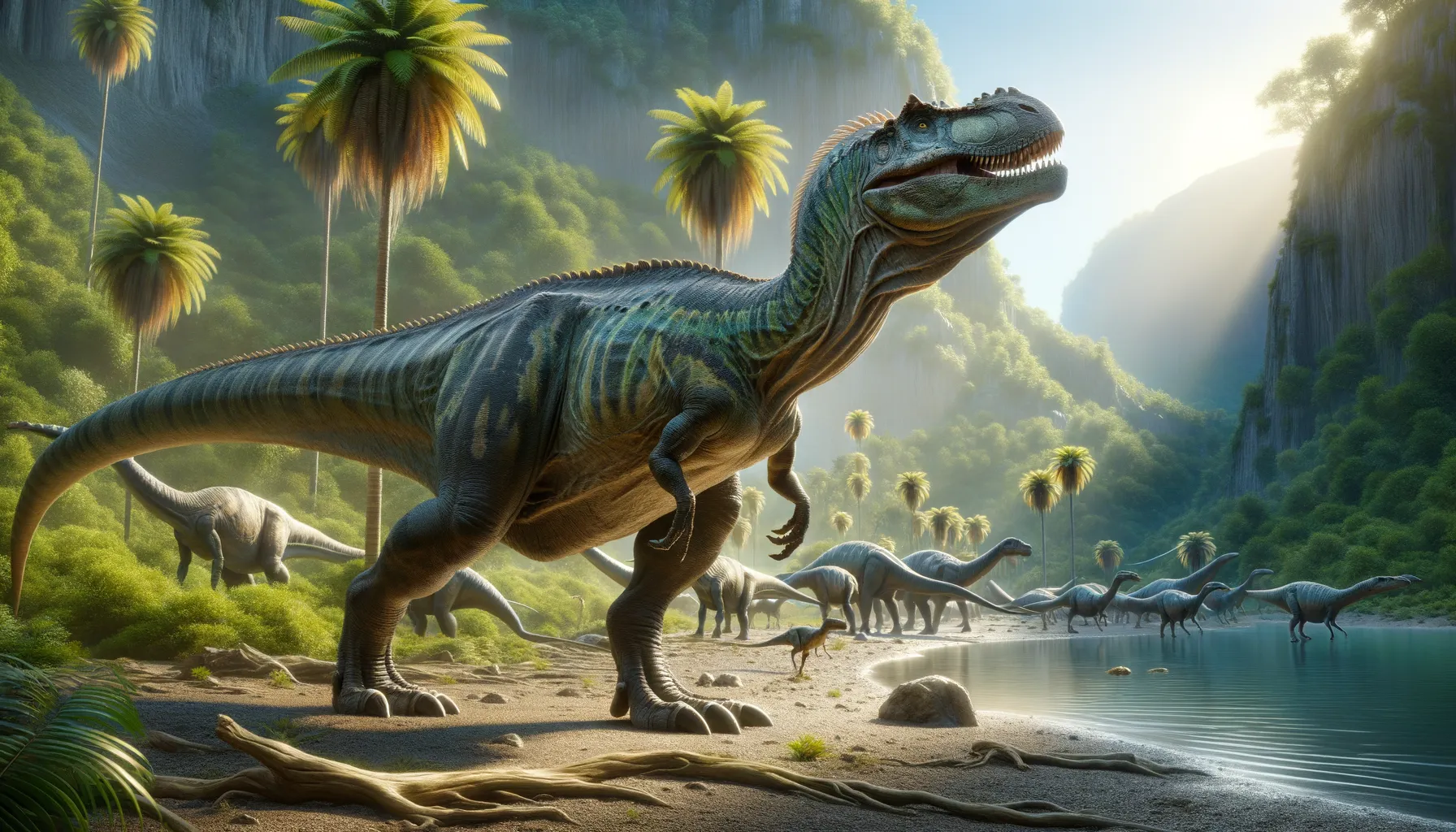
Jintasaurus
Discover the Asian Dino Giant!
Period
triassic
Length
About 30 feet in length from head to tail.
Height
Approximately 11 feet tall at the shoulders.
Weight
Estimated to weigh around 5 tons.
Jintasaurus was a massive herbivorous dinosaur that roamed the Earth during the Cretaceous period. Known for its large body and sturdy limbs, it was well-adapted to grazing on high vegetation. Its discovery in China has provided valuable insights into the diversity and evolution of dinosaurs in Asia. The fossils indicate it was a slow-moving giant, likely living in herds for protection against predators.
Diet
Jintasaurus was a herbivore, feeding primarily on plant material. Its diet consisted of leaves, ferns, and possibly fruit, which it could reach thanks to its considerable height.
Hunting
As a herbivore, Jintasaurus did not hunt for meat. Instead, it spent much of its time foraging for food in lush, forested areas.
Environmental challenges
Jintasaurus faced the challenge of finding enough food in its environment, especially during seasons of scarcity. Another significant challenge was evading predators, which it combated with its large size and likely herd behavior. Climate changes during the Cretaceous may have also impacted its habitat, demanding adaptability.
Speed
Jintasaurus was likely slow-moving due to its large size.
Lifespan
It could have lived for several decades, similar to other dinosaurs.
First discovery
Jintasaurus was first discovered in the Jinta Basin, China.
Fun Facts
- Jintasaurus was discovered in China, adding to the rich collection of dinosaurs found in Asia.
- It belonged to the Hadrosaurid family, which are often called 'duck-billed dinosaurs' due to their snout shape.
- Jintasaurus lived during the Early Cretaceous period, about 120 million years ago.
- The name 'Jintasaurus' comes from Jinta County, where its fossils were first found.
- Like many of its relatives, Jintasaurus was likely a herbivore, feeding on the lush plants of its time.
- Due to its build, Jintasaurus may have walked on both four legs and two, switching between depending on its activity.
- Jintasaurus helps paleontologists understand more about the diversity of hadrosaurid dinosaurs in the Early Cretaceous.
Growth and Development
Jintasaurus, like many large dinosaurs, likely started life as a small hatchling growing rapidly in its early years. It reached full size over several decades, a process that required ample food for energy. Growth rates might have varied depending on environmental conditions and availability of resources.
Habitat
Jintasaurus likely inhabited a variety of environments, from forested areas to open plains, depending on where food was abundant. Its fossils suggest it favored regions that supported lush vegetation. The presence of river systems in its habitat would have provided essential water and aided in sustaining plant life.
Interaction with other species
Jintasaurus may have coexisted with a range of dinosaur species, including predators and smaller herbivores. Its size would have deterred most threats, though it likely relied on group living for added security. Interactions with other herbivores could involve competition for food resources.
Natural lifespan
Its natural lifespan was likely similar to other large dinosaurs, potentially reaching several decades.
Reproduction
Jintasaurus, like other dinosaurs, would have laid eggs, possibly in communal nesting sites. After laying eggs, it might have provided some level of care or protection, although this behavior varies across dinosaur species.
Social behaviour
There is a possibility that Jintasaurus lived in herds, which provided benefits such as protection from predators and increased efficiency in locating food. This herd behavior would have been crucial for survival in their natural habitat.
Fossil locations
Fossils of Jintasaurus have been primarily found in the Jinta Basin, Gansu Province, China. These discoveries have been key in understanding its existence and the region's prehistoric ecosystem. The finds predominantly include bones and partial skeletons.
